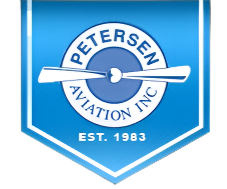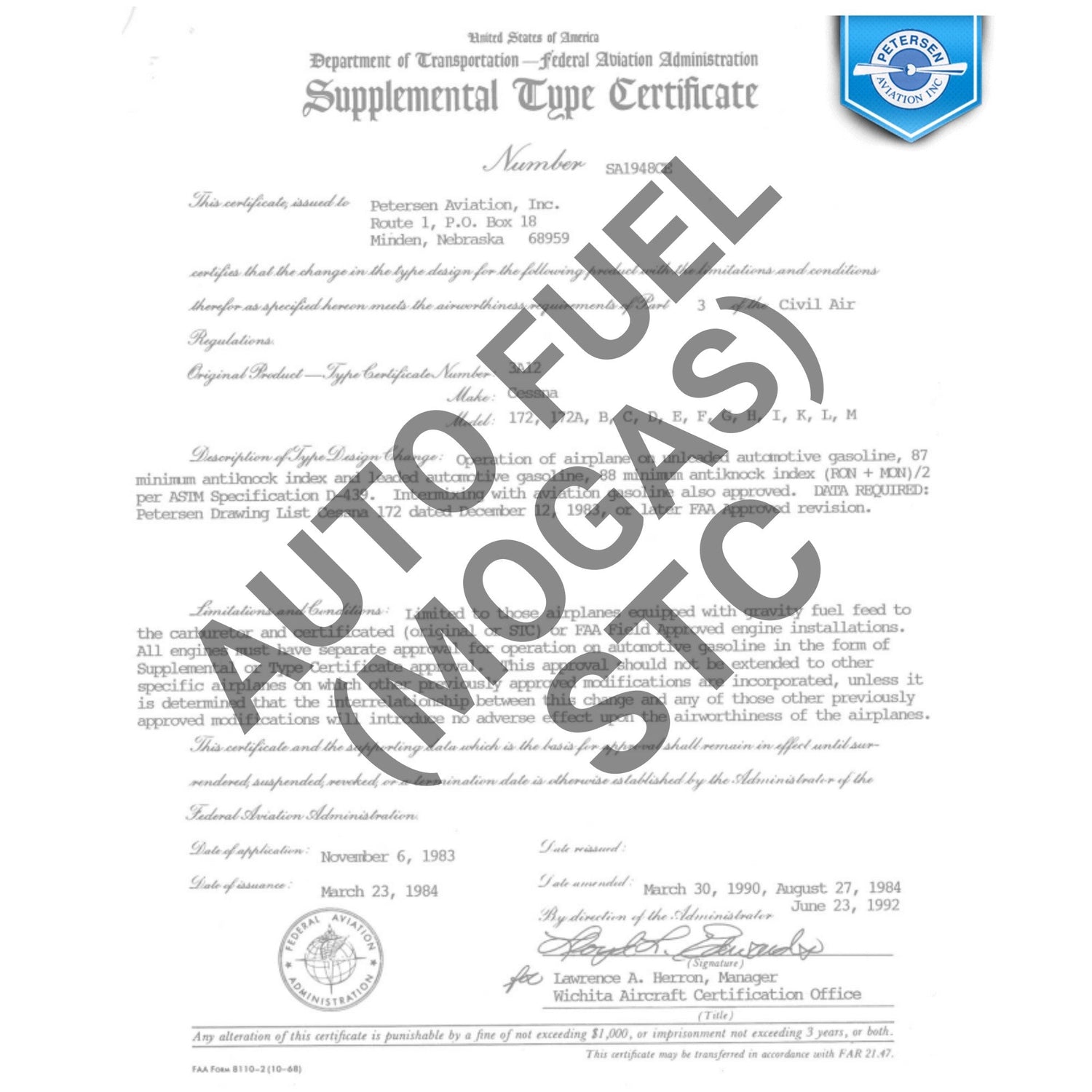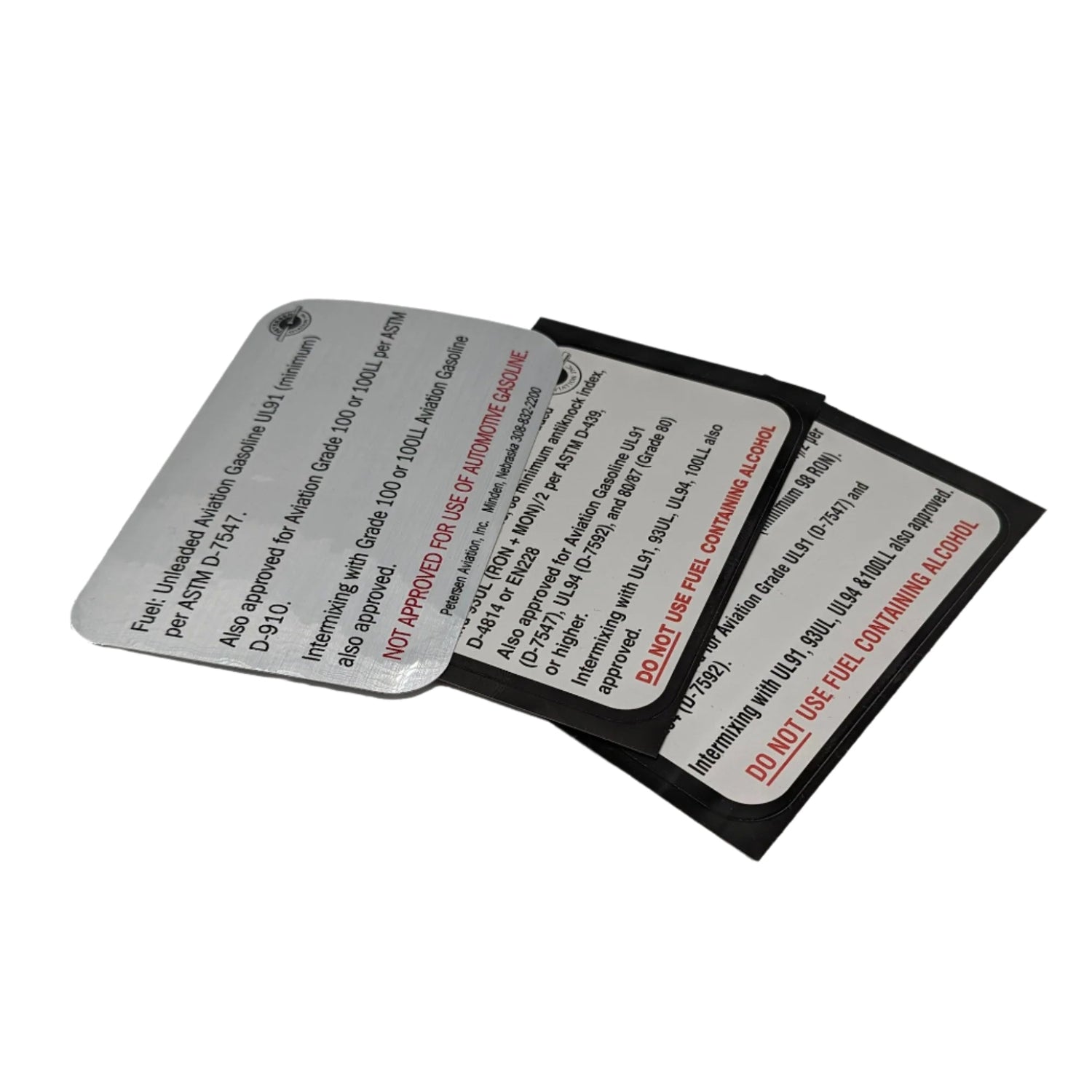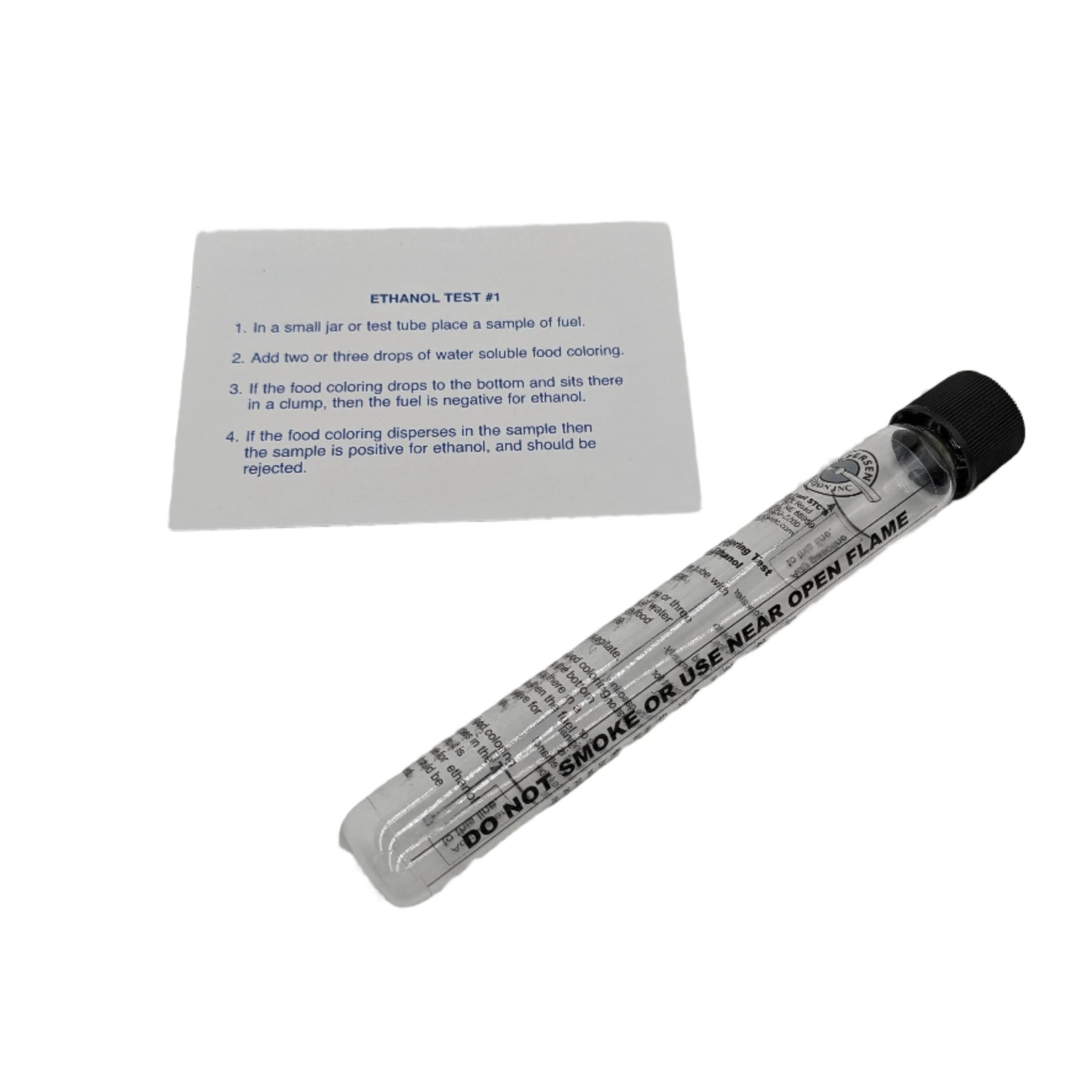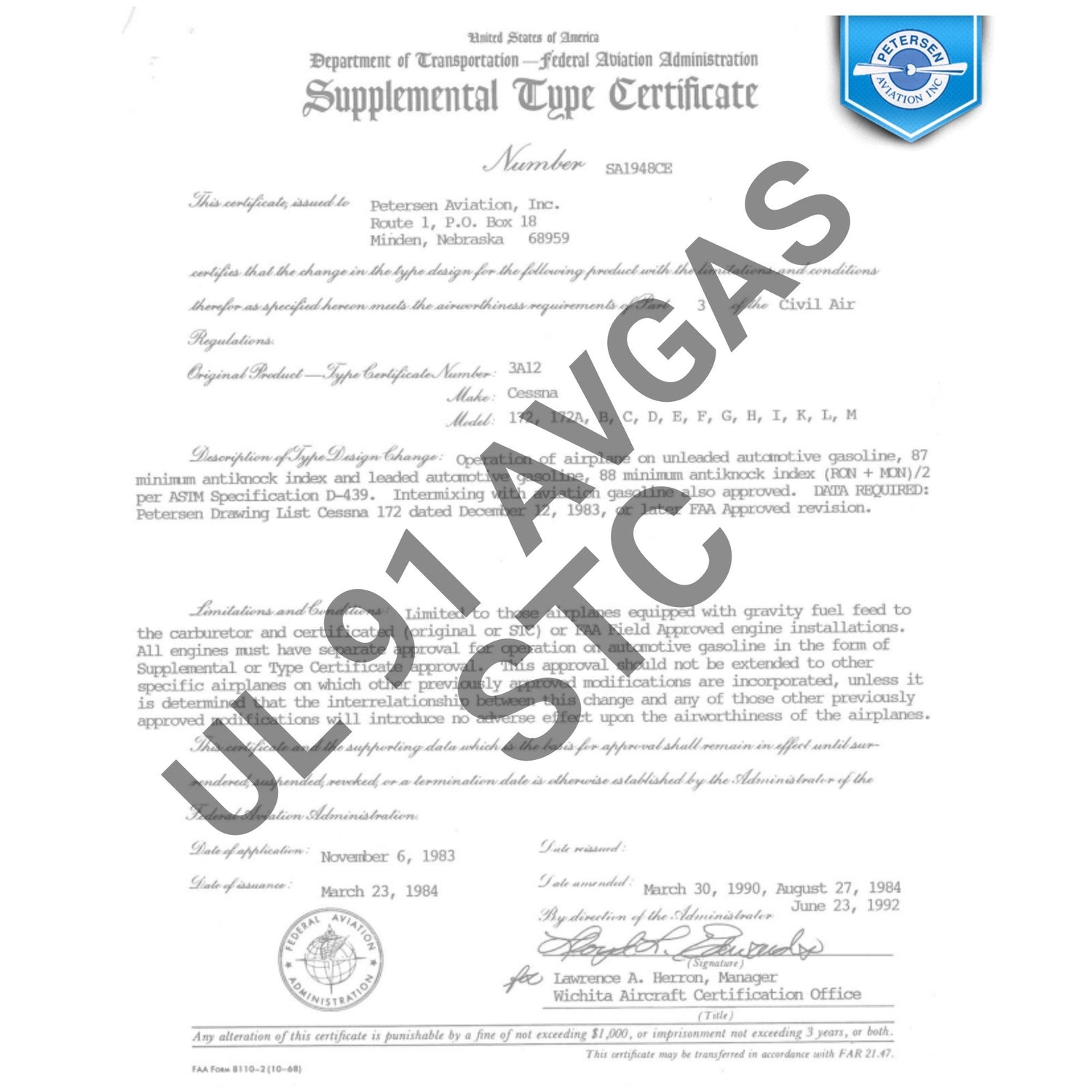Since 1983 over 39,000 airplanes worldwide have been issued a Petersen Auto Fuel STC. These numbers, coupled with nearly 40 years of use, clearly demonstrates the suitability of automotive gasoline for General Aviation.
-
Significant Savings on Fuel
The price difference between auto fuel (mogas) and aviation fuel (avgas) is significant. An airplane averaging 15 gallons per hour, at a savings of only 50 cents per gallon will cost $7.50 per hour less to operate than when using avgas. In 200 hours, this adds up to $1500. Savings of even half this amount would clearly justify the installation of an Auto Fuel STC.
-
Reduced Maintenance Costs
Many of our customers use mogas simply because their airplanes run better on it than they do on 100LL which contains twice as much lead as regular leaded auto fuel prior to the lead reductions which took place in 1986. This excess lead contributes to a host of problems including fouled plugs and sticking valves. Many pilots are switching to mogas simply due to an increasingly limited supply of 100LL. In many regions of the world, it is next to impossible to find 100LL at any price.
-
Impeccable Safety Record
Since 1983 over 38,000 airplanes worldwide have been issued a Petersen Auto Fuel STC. These numbers, coupled with nearly 40 years of use clearly demonstrates the suitability of automotive gasoline for General Aviation.
-
Accepted Word Wide
Most countries accept US Auto Fuel STCs or approve them in conjunction with local Flight Manual Supplements. Mogas is available at many airports.

